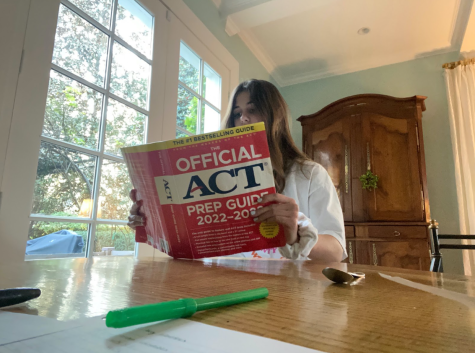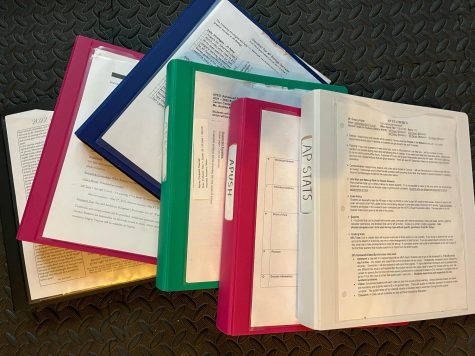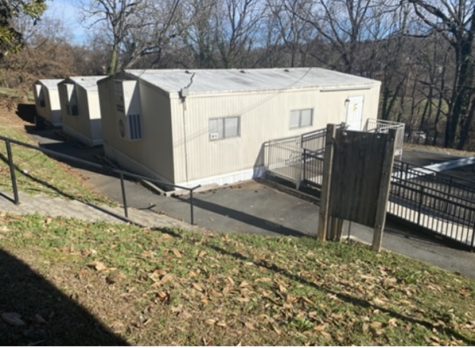A More FLEXible Schedule For Students
November 19, 2021
When COVID struck in 2020, there was a lot of uncertainty about the upcoming 2020-2021 school year. Many safety measures and protocols were implemented which were unpopular at best. One thing the school system got right were FLEX days. During a time when students and teachers were forced to pivot and learn how to navigate a course and curriculum virtually, the value of FLEX days was priceless. They enabled WSFCS staff to properly sanitize the school for in-person learners and had other purposes.
“On our FLEX Wednesday, our schools will be closed to teachers and students so we can perform additional cleaning, but they are also as important for additional planning and preparation for teachers as they continue the concurrent learning process by teaching students online and in-person,” a WSFCS website statement said.
FLEX days also gave teachers time to plan and fulfill other responsibilities.
“FLEX Wednesdays have also proven extremely valuable in giving teachers time to schedule conferences, small group instruction, and other things with remote students that they can’t do since all students aren’t in person every day,” the School district says. “Although our schools will be physically closed, FLEX Wednesdays remain instructional days, and student attendance is expected.”
Having a midweek break in the form of a FLEX day to stay caught up, solidify concepts, seek help, and engage in extracurricular activities was necessary.
“It would have been impossible to keep everyone engaged without a break,” social studies teacher John Clevenger said. “FLEX Wednesdays provided a restart. I think it was good to have the break so the other days were more productive.”
Teachers also benefited from the FLEX day. Aside from class planning, grading coursework and providing extra support to students that found themselves behind last year, teachers had an unbelievable amount of additional work. College recommendation letter writing, sponsoring club activities, coaching, continuing education and staff development, on top of continued COVID expectations and requirements at both home and school was overwhelming.
“FLEX days were one of the only reasons I remained on top of everything last year,” English teacher Lauren Stewart said. “It gave me the opportunity to get work graded in a timely fashion and plan engaging lessons and activities while also giving me time to work with students who were struggling. I could work with students in need one on one which helped with my ability to remediate better. Plus, students could catch up on work while taking a break from having to be in class.”
With the return of students for the 2021-2022 school year, the five-day slog is proving to be a challenge for many. Although FLEX days seem to prove beneficial for students, teachers, and the cleanliness of the school, there have been concerns about the effect missed days would have on the course curriculum if FLEX days were put back in place.
“I think flex days would still allow enough time to cover ‘all required material,’” English teacher Eric Richardson said. “However, I think that meets only the minimum requirements. Being in class allows us to accomplish so much more, and I am reluctant to lose any of that time with my students.”
Another concern about FLEX days is that it would be a “day off” and students would not be using their time to solidify their learning from the week. But yet again, there are plenty of opportunities to prevent these situations.
“Flex days would be a great way to offer enrichment, differentiation, club meetings, field trips, tutoring support, therapy and counseling, college tours, on-campus performances, run large group testing like the ACT and PreACT, allowing extra time with teachers for those who need more one on one or small group,” piano teacher Amybith Harlee said. “It would not be hard to make sure every student and teacher is engaged! It wouldn’t be a day off—it would be a flexible day to do school differently.”
For other teachers, like math teacher Julie Barker, the concerns over losing class time do not outweigh the benefits of a FLEX opportunity.
“We ‘trimmed the fat’ in our classes last year to teach what was truly important, and we finished right on time, with the appropriate amount of final exam review days as well,” Barker said. “Students performed well on final exams and have been prepared for their next steps. I think it takes focus and commitment on the teachers’ and students’ parts, but that the rewards and benefits outweigh the work required to allow for a flex day.”
Perhaps the most important benefit that could come from the reintroduction of the FLEX day into our school calendar, would be the mental health aspect. Student and staff mental health has become a highlighted issue, illustrated by the school board’s recent decision to make November 12th a day off for “mental health.”
“November 12th is a day off where students and staff will have a break from class and assignments and should participate in kindness,” WSFCS communications officer Brent Campbell said during his weekly phone message to students, parents and staff.
After being thrown back into the fire of five-day weeks with no breaks while still worrying about COVID, it is no wonder students and staff need a day to recover.
“The stress students and teachers are under trying to make this a ‘normal’ year, while everything around us is abnormal, are taking a toll on all of us,” social studies teacher Angela Bowman said. “When we were in the throes of the virus [pre-vaccination] we had a Flex day to make sure all precautions were being taken to keep us safe. The stress we are ALL under is just as dangerous to our health as COVID-19, if not more dangerous.”
The intensity of jumping right back into a full school schedule has had negative effects on student morale and overall effectiveness. Across the county schools have had to deal with increases in fights and other “burnout” related issues. There is overwhelming support among staff and students for a FLEX day to be added. 92.9% of surveyed teachers at RJR and 96.8% of surveyed WSFCS students would like to see flex days added.
“I really do miss FLEX days and feel we would not have the student issues or burnout that we currently do if they had been implemented this year,” said Stewart.
The battle between productivity and taking a break can be solved by FLEX days.
“I would love it,” Clevenger said. “I think we could be more productive in-person and a FLEX day would help give everyone a break. I think students and teachers alike would most definitely take advantage of the FLEX day if it existed during in-person learning. For combatting fatigue, it would definitely be helpful.”
The WSFCS board, along with our district leadership should work with school administrators and teachers to reintroduce the FLEX day to our schedules. It will help students, families, and teachers alike accomplish all of the things that are necessary to have a successful and productive year of learning.













